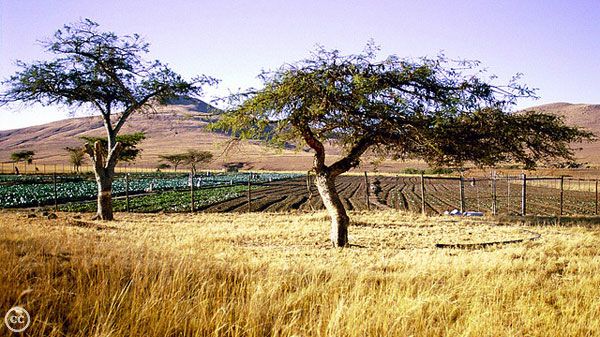Climate Change and South African Agriculture: Impacts and Adaptation Options


Agriculture in South Africa. Image:© Creative Commons World Bank Image
Executive Summary
This paper is part of a study of eleven African countries, Regional Climate, Water and Agriculture: Impacts on and Adaptation of Agro-ecological Systems in Africa, funded by the Global Environment Facility (GEF) and the World Bank’s Trust Fund for Environmentally and Socially Sustainable Development (TFESSD) and coordinated by CEEPA, University of Pretoria.
Statistical evidence suggests that South Africa has been getting hotter over the past four decades, with average yearly temperatures increasing by 0.13°C a decade between 1960 and 2003, with relatively higher levels for the fall, winter and summer periods. There has also been an increase in the number of warmer days and a decrease in the number of cooler days. Moreover, the average rainfall in the country is very low, estimated at 450mm per year – well below the world’s average of 860mm per year – while evaporation is comparatively high. In addition, surface and underground water are very limited, with more than 50% of the available water resources being used for only 10% of the country’s agricultural activities.
Climate change, which may make temperatures climb and reduce the rains and change their timing, may therefore put more pressure on the country’s scarce water resources, with implications for agriculture, employment and food security. Not only South Africa but also the sub-region will be affected, given that more than half of the region’s staple, maize, is produced in South Africa.
This study attempts to assess the economic impact of the expected adverse changes in the climate on crop farming in the country. It estimates a revised Ricardian model for South Africa, using farm household crop farming data from selected districts in the nine provinces, long-term climate data, major soil types in the country, runoff in the districts, and adaptation related variables such as irrigation, livestock ownership, access to output markets and access to public and other extension services.
The analysis shows that climate change affects irrigated farms and dryland farms differently. Irrigated farms are cushioned against climate effects because they have alternatives to rain water. There are also some differences between the ways large- and small-scale farms are affected, but such differences are blurred by the influence of irrigation or dryland farming.
The results also show that climate variables, especially for precipitation, have a non-linear relationship with crop net revenues in South Africa. Certain soil types, such as vertisols and xerosols, may be harmful to crop farming and therefore aggravate the harmful effects of climate change, while other types, such as acrisols and arenosols, may help reduce them. Runoff will also benefit crop farming, but when it is excessive it can be harmful.
In general, adaptations such as irrigation may help reduce the harmful effects of climate change, but if not properly implemented they may aggravate them. Of relevance here is public extension service, which was found to rather negatively affect crop net revenues, suggesting that the information provided by this service may not be very relevant to farmers, even though it can be an important tool for controlling the harmful effects of climate change if properly managed.
One significant finding is that there are seasonal differences in the climate effects, and these differences must not be overshadowed by looking only at the mean annual effects. Increased temperatures will be harmful in the summer farming season but beneficial in the winter one.
Suggested citation
Benhin, J.K.A., 2006: Climate change and South African agriculture: impacts and adaptation options. CEEPA Discussion Paper No. 21, Special Series on Climate Change and Agriculture in Africa. Centre for Environmental Economics and Policy in Africa, University of Pretoria, Pretoria, 78 pp.
(0) Comments
There is no content